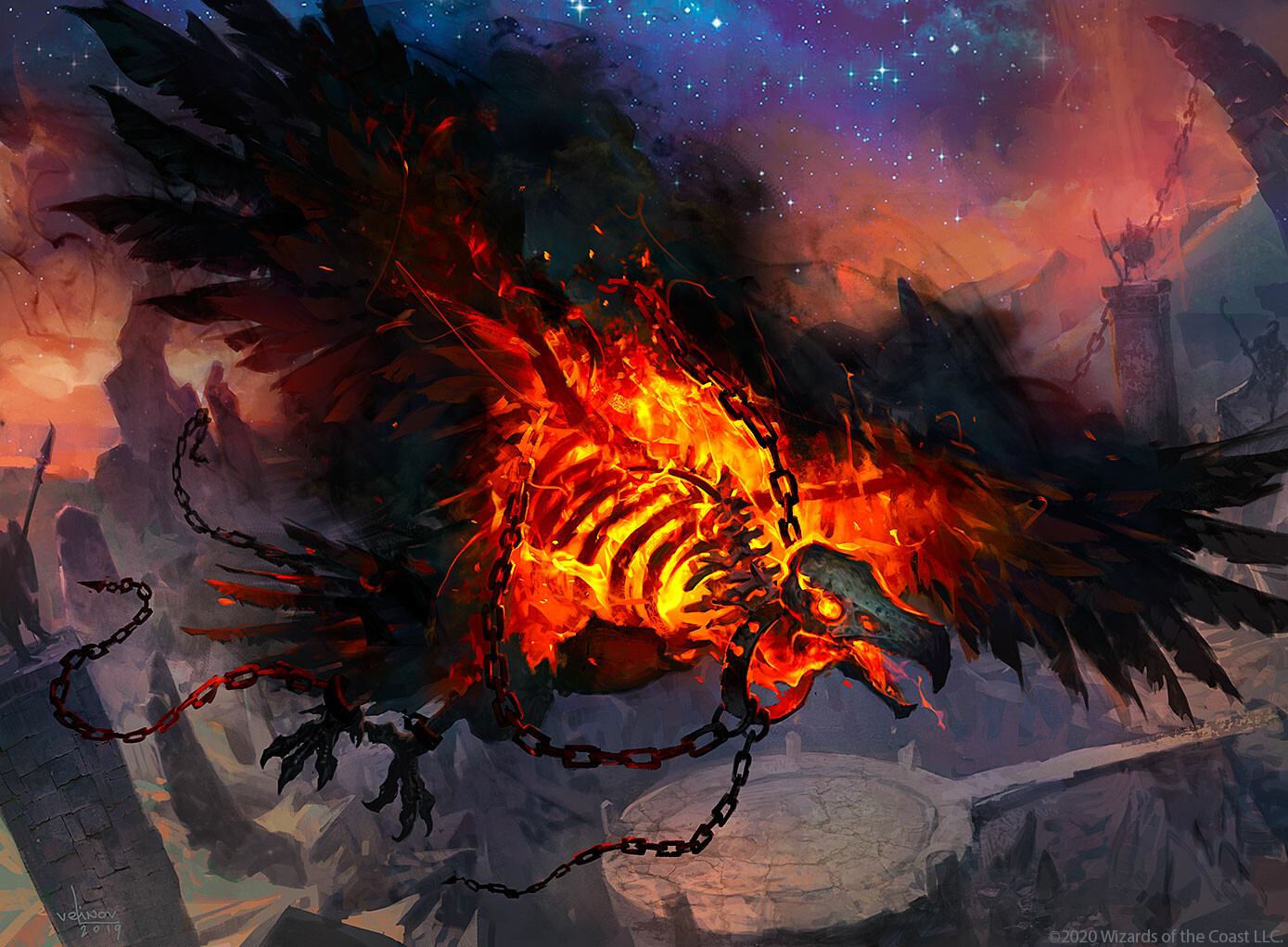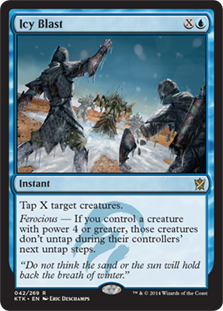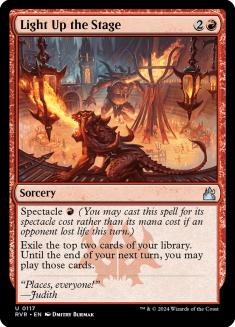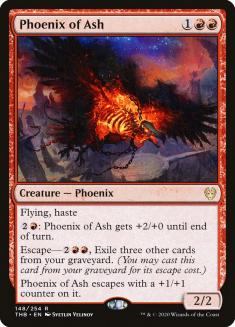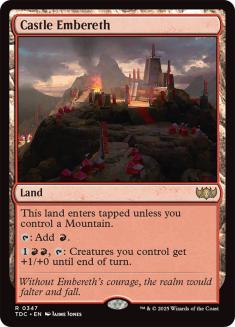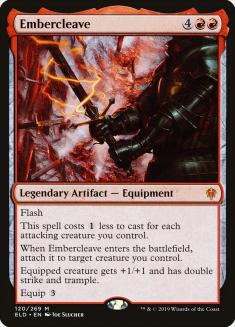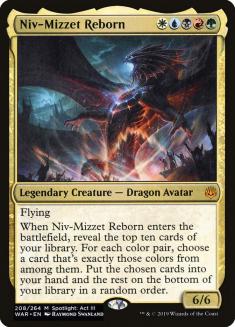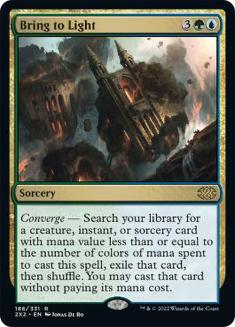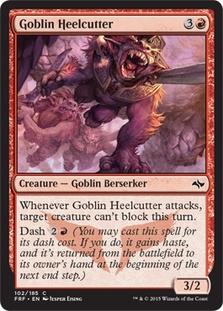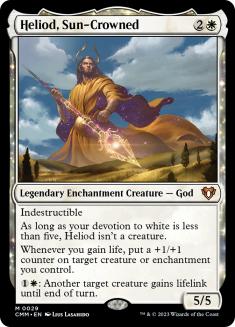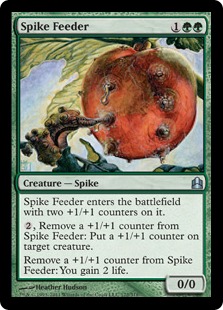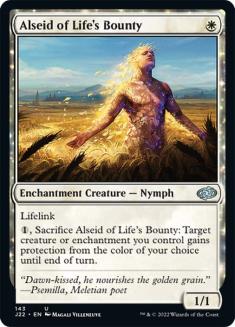Team events are always a double-edged sword. Getting a team together can be a hassle, but spending the weekend beside good friends is great. Winning with those friends is even better, but the lows are also lower.
I entered the Team Constructed Open in Richmond last weekend with two old friends from Connecticut: Chris Marshall, who is literally old, and Jake Mondello, whom I’ve just known for a long time. I traveled with them to tournaments for several years before moving to Roanoke, and while I’m certainly the known name on the list, both of them have some solid results with several Open Top 8 finishes and an Open win alongside a pair of Grand Prix Top 8s for Jake.
Jake, I’m still mad at you for ripping Icy Blast to beat me in that GP Cleveland Top 8.
So while it may have looked to many viewers that I was simply looking to have some fun with old friends last weekend, I was confident in our chances, and liked our deck choices going in. Jake and I were both on Mono-Red Aggro, in Standard and Pioneer respectively, while Marshall took the Modern seat with Heliod Company. I know I’m referring to Jake by his first name and Marshall by his last, but I only ever call him Marshall, so bear with me.
My confidence proved well-founded on Day 1, when we raced out to an 8-0 start, pacing the field before losing the last round to a group of my BCW teammates. Another loss to start the second day set us back, but we rebounded over the next three rounds to leave us as one of two teams at 11-2 entering the final round. Unfortunately, having already played the other 11-2 team left us both paired down and unable to draw. A loss to the powerful team of Harlan Firer, Kevin Jones, and Dominic Harvey and some poor tiebreakers left us in a heartbreaking fifth place.
It was a rough way to end the tournament, but I couldn’t have been happier with my teammates, in part because they carried me for the back half of the tournament, as I dropped six of my last seven matches. On the whole, I had more losses than the two of them combined. It was a truly impressive performance from two players who aren’t nearly as invested in Magic as I am on a day-to-day basis.
I like to spend the day after a tournament reflecting on what happened and finding lessons I can carry forward, and this tournament offers a lot more data given that I was closely watching three different matches each round. Here are my post-tournament thoughts:
Standard
Creatures (29)
- 4 Runaway Steam-Kin
- 4 Scorch Spitter
- 4 Fervent Champion
- 4 Bonecrusher Giant
- 3 Torbran, Thane of Red Fell
- 4 Rimrock Knight
- 4 Anax, Hardened in the Forge
- 2 Phoenix of Ash
Lands (23)
Spells (8)
- 4 Shock
- 4 Embercleave

The primary deviation Jake made in his list was to cut Light Up the Stage and play more lands. Light Up the Stage has been a staple in red decks since it was printed, so that may seem like heresy, but it’s an opinion shared by noted Mountain master Aaron Barich, and when you look more deeply at the deck it makes sense.
The major weakness of these lists is the quality of the one-drops, or lack thereof. Fervent Champion and Scorch Spitter are not powerful cards, even as far as one-mana creatures go. Last year we had Ghitu Lavarunner and Fanatical Firebrand, which were significantly better, as well as Viashino Pyromancer which could help enable Light Up the Stage.
Light Up the Stage works best with a low curve and low land count, since it can help ensure you make land drops so you don’t stumble and effectively withstand disruption with some card advantage supplemented by a high threat density. With Light digging for lands, these decks got to play Experimental Frenzy at the top of their curve, which similarly works best with plenty of cheap spells.
Light also worked well with the high density of burn spells in those red decks. Shock, Lightning Strike, and Wizard’s Lightning, along with incidental damage from Viashino Pyromancer, Goblin Chainwhirler, and haste creatures, let them operate on the burn axis quite often, and generating a critical mass of spells is essential when you’re on that gameplan, while you have the option of sending a burn spell upstairs to enable spectacle.
The current crop of red decks is much different. The typical build is a heavy-creature deck that has a more natural curve. It also has plenty of ways to use excess mana between Adventure creatures, Phoenix of Ash, Castle Embereth, and Embercleave. Anax, Hardened in the Forge encourages this style of play by providing insulation against sweepers, especially if you follow that sweeper with a Torbran, Thane of Red Fell to supercharge the Satyr tokens.
In such a deck, Light up the Stage is more difficult to cast for the spectacle cost, and you’re less likely to be able to use both cards by the end of your next turn. It’s more reliable to make your land drops naturally, and if you flood, it shouldn’t be an issue with all the mana sinks.
In fact, the weakest card in the list was the lone burn spell, Shock. It’s an important card in the mirror, but maindecking the full four is hedging hard towards that matchup since it comes out against both Azorius Control and Temur Reclamation, which I believe are the other decks in Standard’s top tier. You could sideboard more copies, but there are more effective burn spells for those slots in Redcap Melee, Lava Coil, and Scorching Dragonfire.
On the other hand, Jake was continually impressed by Phoenix of Ash, and raising the curve to move them to the maindeck necessitates the 24th land coming in, too, leaving the following list:
Creatures (31)
- 4 Runaway Steam-Kin
- 4 Scorch Spitter
- 4 Fervent Champion
- 4 Bonecrusher Giant
- 3 Torbran, Thane of Red Fell
- 4 Rimrock Knight
- 4 Anax, Hardened in the Forge
- 4 Phoenix of Ash
Lands (24)

Only minor changes for a deck that performed well, but this is just a starting point. Standard is notorious for moving quickly, and with some clear winners from the weekend (Azorius Control and Temur Reclamation) and clear losers (Esper Hero and Rakdos Sacrifice) we have a sharper picture of what decks to target.
In particular, the Temur Reclamation deck is much better against aggro strategies than previous iterations due to the addition of Storm’s Wrath and Uro, Titan of Nature’s Wrath. Jake was successful in the matchup for the most part, though Harlan Firer plan of sideboarding out all of his Expansions and Wilderness Reclamations and effectively becoming a Uro Control deck was quite effective. Uro is so critical to such a strategy that graveyard hate like Soul-Guide Lantern may be warranted. It’s not ideal but Uro is a tough card for red decks to beat.
That said, the raw power of and synergy between Anax, Torbran, and Embercleave is high enough to keep the red deck in the Standard discussion no matter where the metagame turns.
Pioneer
Creatures (27)
- 4 Goblin Rabblemaster
- 4 Monastery Swiftspear
- 4 Bomat Courier
- 3 Hazoret the Fervent
- 4 Soul-Scar Mage
- 4 Bonecrusher Giant
- 4 Rimrock Knight
Lands (23)
Spells (10)

Mono-Red Aggro performed adequately at both Players Tours, and I thought the changes I made to the stock lists, opting for Mutavault over Goblin Chainwhirler and playing Goblin Rabblemaster and Stoke the Flames, were an improvement, despite my record. That said, I can’t recommend this deck moving forward.
One of the reasons I gravitated toward this deck was its matchup against Five-Color Niv-Mizzet. I didn’t expect it to perform well on the weekend given the rise of Dimir Inverter, but I expected it to be popular. Most of the time the paper metagame is a bit behind the online metagame, and Inverter had only gained hype in the last week leading up to the event, so I thought I would go through several Niv pilots on Day 1 before hitting the winners’ metagame.
As it turned out, Richmond was about on par with the online metagame, and I think there some unique circumstances that led to that outcome. First was the Players Tour events, which started on Friday and gave prospective Richmond players some time to make last-minute adjustments. I suspect the popularity of Dimir Inverter in those events led anyone who was on the fence about Niv-Mizzet to move away from it.
Then there is the fact that this is a team event, which does two things. First, it narrows the field since hundreds of players who may not be interested in Pioneer and would simply play a deck they like are instead in one of the other seats. Second, it makes the cream rise to the top quickly, since the best players, who tend to choose better-positioned decks, play with other great players, and few of those teams flame out.
With these factors in mind, it seems unlikely that I hit a lot of Niv decks past the first few rounds. In fact I only played against one in the entire tournament. Instead, I fell victim to a bunch of Spirits decks and ended with a mediocre 2-3 record against Dimir Inverter.
Against Spirits, their combination of lords and protection made my removal, especially the Shocks, awkward. And if they ever had protection for the first lord and cast a second, I was left with few ways to break through their creatures that both outsized mine and survived most of my removal spells.
Against Dimir Inverter, it proved harder to go underneath them than I expected. Part of it was the efficacy of Thassa’s Oracle. It’s a solid speed bump that they are all too happy to put in the graveyard, since it allows them to cast Inverter of Truths on Turn 4 and have an even bigger speed bump and the fast combo. The singleton Goblin Heelcutter in my sideboard was in part a nod to wanting to attack through Oracle without it dying, as well as extend my battlefield without playing too far into their sideboard sweepers. It was effective in that role, but not enough.
Ultimately, I was worried about leveling myself by playing too much against the online metagame, and ended up choosing a deck that was a bit behind the metagame that showed up. I’ll be moving on from Mono-Red for Philadelphia this weekend, but if you’re a die-hard mountaineer, I’d look at Kellen Pastore’s list from the Pioneer Classic:
Creatures (19)
Lands (20)
Spells (21)

His more burn-heavy approach lets you play a non-interactive game against Dimir Inverter, ignoring their blockers unless you are stealing them with Kari Zev’s Expertise, while the lower curve makes it easier to get underneath the Spirits decks.
Modern
Creatures (32)
- 4 Birds of Paradise
- 4 Spike Feeder
- 4 Kitchen Finks
- 4 Noble Hierarch
- 2 Viscera Seer
- 3 Anafenza, Kin-Tree Spirit
- 2 Walking Ballista
- 1 Giver of Runes
- 4 Ranger-Captain of Eos
- 4 Heliod, Sun-Crowned
Lands (20)
Spells (8)

We expected Amulet Titan to be easily the most popular deck in the tournament, with Mono-Red Prowess in second on the back of its perceived strong matchup against Amulet Titan. The Day 2 metagame was even more polarized than we expected, with Amulet Titan taking up 35% of the field. Mono-Red Prowess was indeed in second place, albeit a distant one with only an 11% share, tied with Heliod Company.
I watched Marshall beat those two decks repeatedly, though he did take a single loss to each. The combo between Heliod, Sun-Crowned and Spike Feeder is much more robust than with Walking Ballista since it’s much cheaper, and both cards can be found off a single Collected Company. Also, gaining a million life is as good as winning the game against Mono-Red Prowess, while Amulet Titan is put in the tough position of having to kill everything you cast for the rest of the game with Valakut, the Molten Pinnacle triggers with the hope of decking you.
That’s a really tough hill to climb, but it’s not insurmountable, so if you find yourself in this position, your best option is to wait on your threats as much as possible, make a ton of land drops, and cast too many must-kill threats in one turn, overloading their various fetchlands and Sakura-Tribe Scout activations used to generate Valakut triggers on your turn.
Against Mono-Red Prowess, you want to play defensively, not letting them tempo you out due to your awkward curve and their ease in killing your mana creatures. You buy plenty of time with your many lifegain creatures, and once Heliod is on the battlefield, the threat of the combo makes them slow down and hold up removal as well.
Amulet Titan is the talk of Modern right now with the addition of Dryad of the Ilysian Grove, but if I had to play the format tomorrow, I would register Heliod Company without hesitation. After the tournament, Marshall only wanted to make minor changes to the following list:
Creatures (31)
- 4 Birds of Paradise
- 4 Spike Feeder
- 1 Eternal Witness
- 4 Kitchen Finks
- 4 Noble Hierarch
- 1 Viscera Seer
- 3 Anafenza, Kin-Tree Spirit
- 1 Walking Ballista
- 1 Giver of Runes
- 4 Ranger-Captain of Eos
- 4 Heliod, Sun-Crowned
Lands (21)
Spells (8)

The singleton Eternal Witness replaces the second copy of both Viscera Seer and Walking Ballista, ensuring that you can recur each combo piece should it be removed early. Otherwise the second copy of each was entirely unnecessary and a weak card to draw. Instead you get access to another land to ensure you make your first three if they kill your mana creature. Moving up on basics is an attempt to make the mana less painful, which is one way to lose a quick game to Mono-Red Prowess, as well as provide more basics for Path to Exile and Field of Ruin, since this deck uses extra mana surprisingly well.
Marshall and I also discussed the potential of Alseid of Life’s Bounty instead of or in addition to Giver of Runes. Alseid’s protection is available immediately after casting, and having a lifelink creature around can be valuable with Heliod, letting you generate +1/+1 counters without spending mana. Otherwise the deck performed quite well.
Bubbling out on Sunday was tough, even for someone who has experienced plenty of gut-wrenching losses. But taking the night to let the adrenaline of competition wear off and then coming back the next day to take an honest look at what you did is always an uplifting experience for me. I get to congratulate myself and my teammates on what we did well, and work towards fixing what we (in this case mostly I) did wrong.
Now, if you’ll excuse me, I have another tournament to prepare for.

